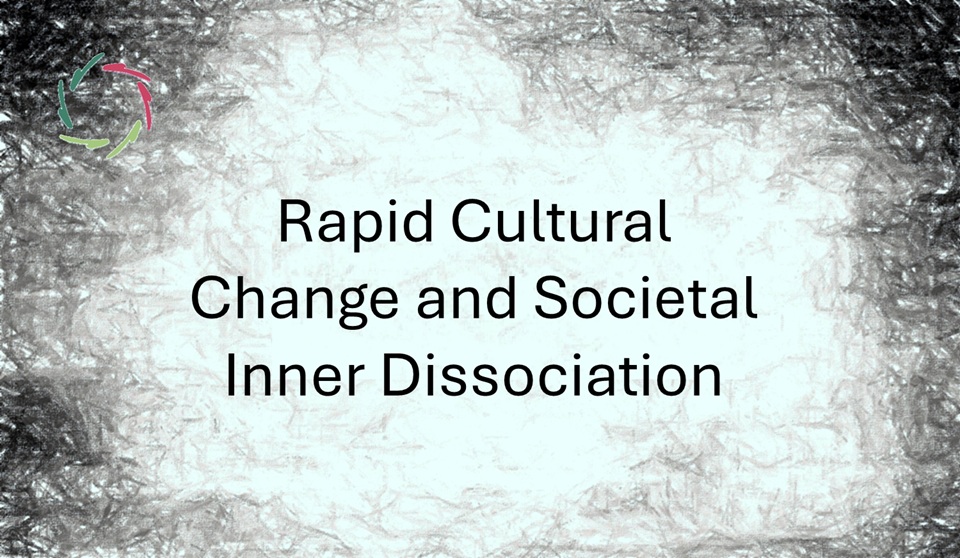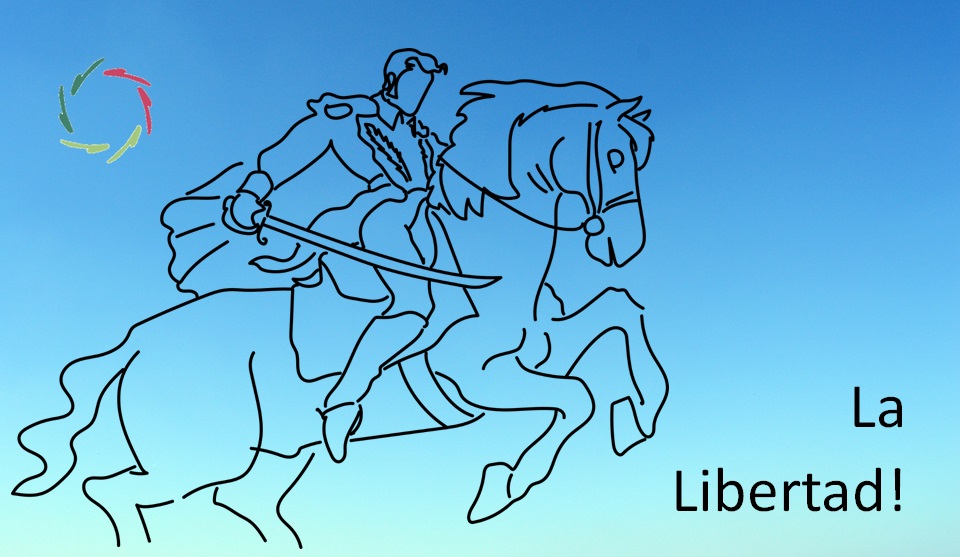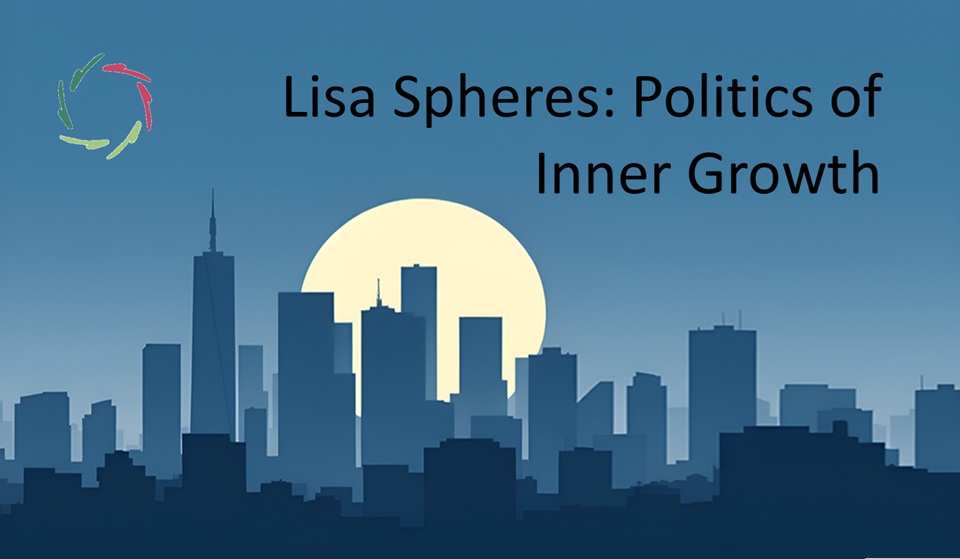Rapid Cultural Change and Societal Inner Dissociation

In societies already burdened by Societal Inner Dissociation (SID), rapid cultural change acts like a fierce storm hitting a structurally weakened bridge.
The cracks were already there — unseen by many but ever-widening. When change comes quickly, as with globalization, technological disruption, or political upheaval, the fragile coherence shatters dramatically. This post is part of the *SID* series. Please read the primary blog of this series for a basic understanding of Societal Inner Dissociation (SID).
A culture out of sync with itself
At first glance, societies may seem to evolve smoothly, adapting to new technologies, absorbing cultural influences, and adjusting institutions. But beneath this apparent adaptability, many societies suffer from an internal fracture – a Societal Inner Dissociation (SID) – that goes largely unrecognized.
SID occurs when the outer expressions of a society (its laws, institutions, media, and habits) become disconnected from the deeper, non-conscious layers of that society — its shared emotional undercurrents, collective memories, moral intuitions, and symbolic meanings. What makes this fragmentation dangerous is not just that it exists, but that it is usually invisible. The tension accumulates over time, forming a chronic background stress.
Into this fractured state comes the whirlwind of cultural change.
Acute stress upon a dissociated base
When rapid cultural change occurs in a society already marked by SID, the consequences can be dramatic and unpredictable. What might have been manageable in a healthy society – say, technological disruption or immigration patterns – instead triggers deep disorientation and emotional backlash. We are witnessing not just change but a stress injury to a weakened cultural organism.
This is a case of acute upon chronic stress, a concept known in medicine. An acutely traumatic event is far more damaging when it strikes a person whose system is already under chronic stress. The same applies at the societal level: chronic SID weakens a society’s capacity for resilience, making each new disruption more fragmenting.
When people feel unmoored and overwhelmed by change, they grasp for certainties. These may appear as rigid ideologies, conspiracy theories, fundamentalist movements, or nostalgic identities. Such responses are not irrational — they are symptoms of a dissociated cultural system under duress.
The UK as a case in point
Let’s take the United Kingdom. While Brexit was an acute political moment, its roots go much deeper. For decades, many communities in the UK experienced a subtle erosion of cultural meaning: industrial decline, regional marginalization, and a fading sense of shared purpose. Layered onto this was the unresolved psychological legacy of empire, a once-meaningful narrative that had quietly dissolved without replacement.
In this context, Brexit wasn’t just about the EU. It symbolized – and attempted to address – an identity crisis. For many, it promised a return to control, meaning, and distinctiveness. But it did so at the surface level, without healing the deeper dissociation. That’s why the aftermath, rather than bringing relief, brought further division and cultural instability.
The lesson is clear: when cultural change touches a dissociated nerve, the result is often not evolution, but fracture.
Loss of cultural inner stability
At the heart of SID is a loss of inner stability. Societies, like individuals, need a core — not a fixed ideology, but a felt sense of coherence and continuity. This coherence doesn’t prevent change; it enables it. When people feel anchored in what matters most, they can adapt without fear of losing themselves.
But when that inner foundation has already eroded through years or decades of dissociation, any change – even positive – feels like a threat. Even well-intentioned reforms may be met with anxiety, denial, or rage, not because they are wrong but because they arrive in a cultural body already too fragile to absorb them.
This is not a moral failing. It is a failure to cultivate inner depth at a collective level — and the consequences are mounting.
A society’s immune system
In a way, a healthy culture has its own ‘immune system’ — an intuitive capacity to digest novelty, discern values, and integrate difference. But in the presence of SID, that immune system malfunctions. Change is no longer assimilated — it is resisted, rejected, or weaponized.
This helps explain why extreme political movements rise during times of cultural transition: not because change itself is evil, but because people are left without symbolic frameworks, inner narratives, or emotional grounding to guide them. In the vacuum, fear becomes the organizing principle.
The result is not just stress, but pathology.
The real task: not halting change, but cultivating depth
Some may respond to this by longing to ‘slow things down’ or ‘go back.’ But cultural change cannot be undone. The world is too interconnected. Technologies, ideas, and global challenges flow with increasing speed.
The challenge is not to halt change but to deepen our capacity to process it. Societies need to cultivate what could be called cultural depth literacy: the ability to navigate rapid change with roots in shared meaning, mutual respect, and emotional coherence. This is not about grand ideologies, but simple, profound alignment between what we value and how we live.
Toward a cultural healing
What might this look like?
It may start small: community dialogues that move beyond slogans; leadership that speaks to both reason and feeling; education that includes reflection, philosophy, and Compassion.
It may continue with public spaces – both physical and digital – that foster real presence rather than distraction, and technologies like Compassionate A.I. that support rather than fragment the human psyche.
It will require tools for inner support, such as autosuggestion, which helps individuals restore coherence within themselves and, by extension, within their cultural spheres. The deeper the personal grounding, the more constructively one can engage with outer shifts.
SID is not a final diagnosis. It is a call to integration.
The opportunity hidden in the crisis
Every culture evolves. That’s not the problem. The problem is evolution without anchoring.
The opportunity now is to rebuild that anchoring — not in nostalgic myths, but in living connection: to one’s deeper self, to others, and to what lies beyond utility. In this way, SID can become a gateway, not a wall.
In this series, we’ve seen SID as a crisis of fragmentation. But it is also a pointer toward the kind of society we deeply long for: integrated, Compassionate, and resilient — because it is rooted in depth.


